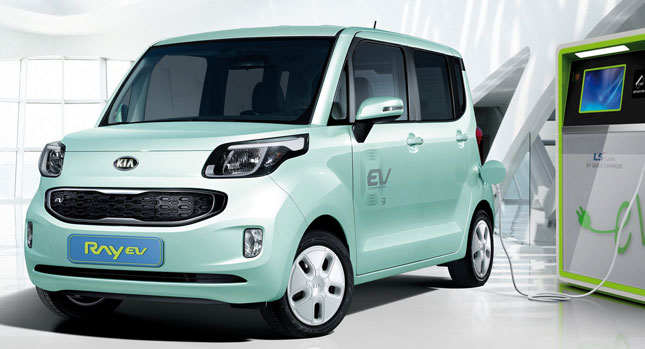The new Ray EV is not only Kia’s first attempt to enter the electric car market but it is also the first production EV to be introduced by a Korean automaker.
The battery-powered model is based on the recently launched Ray city car, which is only offered in Kia’s home market. It shares the regular model’s major dimensions and, in a global first for an EV manufacturer, is built on the same production line as the conventional combustion-engine models.
In place of the Ray’s 1.0-liter unit, the EV model gains a 50kW electric motor that develops 167 Nm of constant torque (an increase of 77 percent over the gas unit) and a high-capacity 16.4 kWh lithium ion polymer battery pack with a 10-year life cycle that’s placed under the rear seat and cabin floor.
Kia says that even though the Ray EV weighs 187 kg (412 pounds) more than the gasoline model, it offers a “brisker” 0-100km/h (62mph) acceleration time of 15.9 seconds and can reach a top speed of 130km/h (81mph).
The battery pack can be fully recharged in six hours using a standard 220V household supply and just 25 minutes in fast-charge mode.
Other highlights include the Ray EV’s automatic transmission that offers the driver a choice of two modes while in ‘D’ drive: the ‘E’ (or ‘eco’) mode, which optimizes the delivery of the motor’s torque to increase the driving range, and ‘B’ (or ‘brake’) mode, which can be chosen when driving downhill roads to maximize braking power.
The Ray EV gets a unique instrument cluster that displays electric motor operation, battery status and distance to recharge while Kia also fitted the car with a warning system called VESS (Virtual Engine Sound System) that delivers a mixture of recorded gasoline engine noises to warn pedestrians.
Kia says that it is planning to manufacture 2,500 units of the Ray EV in 2012, all of which will be for government use in Korea – at least for the time being.
PHOTO GALLERY












